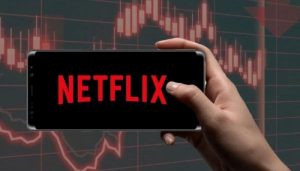Britons economize dining home, indulge subsequently

Financially constrained Britons are trimming dining-out expenses and reducing takeout spending to amass resources for the impending lavish Christmas spree. September saw a significant drop of 10.8% in restaurant expenditures compared to August’s 5.8% decline, as highlighted by recent UK consumer card expenditure data from Barclays.
Moreover, the surge in takeaway spending has notably slowed down, slipping from 9.2% in August to 6.5% last month. This shift aligns with 44% of surveyed Britons aiming to curtail non-essential expenses to set aside funds for Christmas.
The main emphasis on cost-saving efforts has revolved around reducing spending on dining out at restaurants, with 60% of surveyed individuals recognizing it as the prevailing method to fortify their household budgets ahead of the festive season.
This inclination towards saving has also manifested in monthly foot traffic statistics, indicating a nearly 3% decrease in visits to high streets, retail parks, and shopping centers last month, as reported by the British Retail Consortium.
Shopping centers and retail parks witnessed substantial decreases in foot traffic, declining by 4% and 2.4%, respectively, compared to August.
Andy Sumpter, a retail consultant at Sensormatic Solutions, highlighted, “Rather than the typical rise in shopper traffic we expect in September due to back-to-school shopping, footfall stayed restrained as consumers remained cautious about discretionary spending, potentially in preparation for saving ahead of the lucrative holiday shopping season and Christmas.”
Two-fifths of consumers are expecting higher Christmas expenses this year, with a fifth already starting their gift shopping to manage costs. Nearly one in five (18%) have begun discussions with family and friends about reducing gift exchanges for the upcoming holiday season.
Despite specific sectors slowing down, overall consumer card spending increased by 4.2% in September. However, this growth was overshadowed by the 6.3% inflation rate, driven by escalating product costs.
Spending on essential items notably surged, leaping from a 1% rise in August to 4.6% last month, particularly with an 11% increase in fuel expenditures.
While food prices saw a decline for the first time in two years during September, grocery expenses continued to climb, marking a 7% increase compared to the 4.5% growth observed in August.
Esme Harwood, a director at Barclays, observed, “Grocery spending saw a decline over the summer due to the anticipated drop in food price inflation. However, there’s a concern as the growth resumed in September, hinting that food prices might not decrease as expected.”
A majority of consumers, precisely three-quarters, are familiar with shrinkflation, a practice where supermarkets maintain or increase prices while reducing product sizes or weights. Additionally, 68% of respondents feel that retailers should transparently label such products.
The ongoing Rugby World Cup, showcasing teams like England, Ireland, and Wales in the quarter-final stage, has notably boosted patronage at pubs and bars. Before the tournament kicked off in August, spending in these venues increased by 2.8%. However, last month witnessed a surge of 6.1% in spending, offering a welcome uplift for these establishments.


